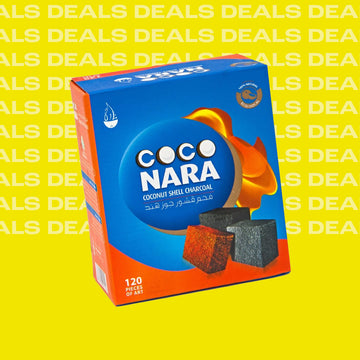The world of hookah is a vast and aromatic landscape, rich with tradition and endless innovation. For seasoned enthusiasts and newcomers alike, the ultimate quest is to discover the best combination in hookah flavors. While personal preference reigns supreme, certain flavor pairings elevate a simple smoking session into a truly memorable experience. This exploration dives deep into the art of mixing hookah flavors, from timeless classics to modern exotic blends, helping you find your perfect harmony.
What is a hookah flavor mix?
At its core, a hookah flavor mix is the practice of combining two or more distinct hookah flavors in the bowl before smoking. It is an art form driven by creativity and a desire for a more complex and nuanced smoke profile than a single flavor can offer. Instead of being limited to a single note, mixing allows for layering, where one flavor acts as a base while another provides a vibrant top note or a subtle aromatic finish. The goal of creating hookah flavor mixes is to achieve a balanced blend where the flavors complement each other, avoiding overpowering or clashing notes. This technique is crucial for customizing your experience, whether you are seeking a cooler, sweeter, tangier, or creamier smoke. Achieving the perfect ratio and proper packing technique are essential to ensure the flavors burn evenly and consistently throughout the session.
Classic and Fruit Flavored Mixes
The foundation of flavor mixing often begins with established pairings that have stood the test of time. A classic hookah flavor is typically a single-note profile like Double Apple, Grape, or pure Mint. However, the real magic happens when these staples are paired with vibrant, juicy alternatives. Mint hookah flavors, for instance, are the universal enhancer; adding a touch of mint to virtually any fruit flavor instantly makes the smoke smoother, cooler, and more refreshing. When exploring the vibrant world of fruit flavored hookah, combinations that balance sweet and tart are always a win like:
Refreshing Pearberry

The bright, crisp notes of pear often meld beautifully with the deeper, sweet-tart profile of a berry or grape. An excellent complementary mix is pairing a sweet red grape with a complementary sweet tropical fruit like mango or pineapple.
Purple Crush

The grape provides a rich, dark backbone, while the tropical fruit adds lightness and aromatic complexity.
Other beloved pairings include Lemon-Mint, which is the quintessential palate cleanser, and Watermelon-Strawberry, a mix that embodies summer sweetness. These mixes prove that often, the most satisfying combinations are rooted in familiar, natural flavor profiles.
Dessert and Exotic Flavors
Moving beyond the fruit basket, the world of dessert and exotic hookah flavors offers a playground for richer, more indulgent combinations. These mixes often aim to replicate the taste of a favorite treat or transport the smoker to a far-off land with unique spices and aromatics. The base material—whether it’s traditional hookah tobacco or non-tobacco herbal alternatives—is known as hookah shisha. This medium is perfect for carrying the heavy, warm notes of a dessert blend.
Chai Delight

This flavor, with its medley of warm spices like cardamom, cinnamon, and ginger, is a perfect foundation for a rich, warming smoke. It can be paired with a vanilla or caramel flavor to enhance its sweetness, or with a creamy base to smooth out the spices.
Cream Team

A flavor invaluable in the dessert realm. They act as a unifying agent, mellowing out stronger spices or providing the rich, mouth-coating texture that defines a true dessert flavored hookah. Try mixing a cream flavor with a coffee or chocolate flavor for a mocha-like experience, or with a cinnamon pastry flavor for a comforting pie profile.
Bluegrass Delight

This flavor, with its distinct, perhaps unconventional, profile, offers a chance to create something completely unique. It could be layered with a complementary citrus to enhance its brightness or a subtle rose flavor to bring out an underlying floral sweetness. The key with exotic mixes is experimentation, often relying on the 80/20 rule: 80% of a familiar flavor and 20% of the exotic flavor to test the waters.
Tips for Creating Your Own Mixes
Creating your signature blend is the most rewarding part of the hookah experience. Here are a few essential tips for mastering your own custom blend of shisha flavors:
-
Understand the Flavor Profile: Before mixing, categorize your hookah flavors into types: Base (E.g., Mint, Vanilla, Cream), Main (E.g., Apple, Watermelon, Chai), and Accent (E.g., Cinnamon, Cardamom, Gum). Most successful blends use one of each.
-
Start with the 70/30 or 60/40 Rule: When pairing two flavors, use one as the dominant profile (70%) and the other as the accent (30%). This prevents the flavors from clashing and allows one to shine.
-
Balance Intensity: Pair strong, pungent flavors (like certain citrus or spices) with softer, milder flavors (like cream or mild fruit). Never mix two overpowering flavors at a high ratio unless you aim for a flavor explosion.
-
Layering Technique: The way you pack your bowl affects the mix. You can layer the flavors (one on the bottom, one on the top), divide the bowl (half and half), or "fluff-mix" them evenly. Layering works well for flavors that burn differently, while the fluff method is ideal for balancing complex profiles.
-
Use Mint as a Catalyst: When in doubt, add a small amount of a cooling mint hookah flavors to the blend. It rarely ruins a mix and often enhances the intensity and duration of the cooling sensation.
Ultimately, the search for the best combination in hookah flavors is personal. Whether you find comfort in the tried-and-true classic blends or excitement in complex dessert creations, the perfect mix is the one that gives you the most enjoyment with every smooth, flavorful puff.






